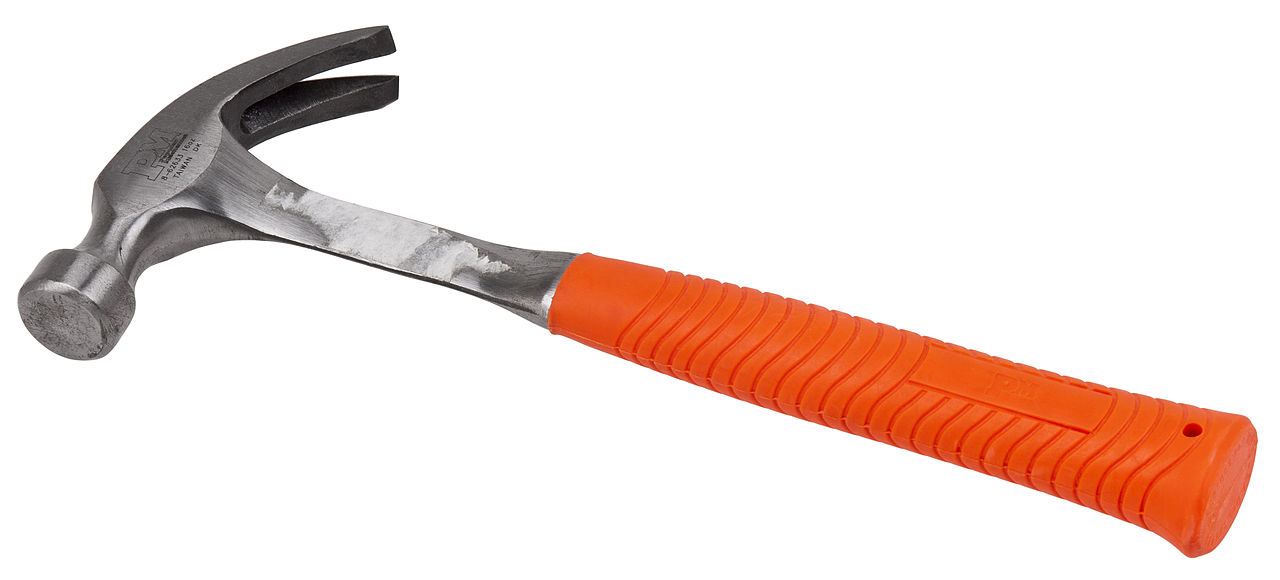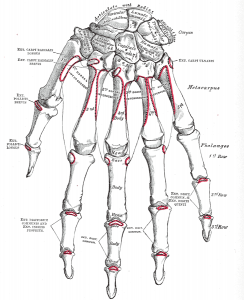1. Introduction
- Structure refers to something’s form, makeup, or arrangement.
- Function refers to something’s job, role, task, or responsibility.
- Determine means to cause, direct, or govern.
In biology, a key idea is that structure determines function. In other words, the way something is arranged enables it to play its role and fulfill its job within an organism (a living thing). Structure-function relationships arise through the process of natural selection. But before explaining how that process works, let’s get our heads around the structure-function connection.
Structure determines function is also a key idea in engineering. In this human realm, structure/function relationships are often more obvious and easier to grasp than they are in the biological realm. Let’s use a hammer as an example:

Function: This tool has two functions. Pounding nails in, and pulling them out.
Structure to Function Relationship:
The handle allows the tool to be easily grasped. The length of the handle allows for a swing that increases the speed of the head of the hammer. The head is composed of hard metal. When the head hits the nail, the metal transmits the force of the swinging hammer into the nail, driving it into the wood.
The claw allows the user to grab a nail. The rounded head acts as the fulcrum of a lever. The long handle allows for leverage to pull the nail out of the wood.
2. Apply the idea: Human Artifacts
[qwiz style = “width: 528px; min-height:0px; border: 3px solid black; ” qrecord_id=”sciencemusicvideosMeister1961-structure and function quiz 1 (artifacts)”]
[h]Application: Structure and Function in Human Artifacts
[q]Describe the function of the tool shown below, and explain how the structure relates to the function.
[c]wqBzaG93IHRo ZSBhbnN3ZXI=[Qq]
[f]IEFOU1dFUiAoYWRhcHRlZCBmcm9tIFdpa2lwZWRpYSk=
Cg==RnVuY3Rpb24=OiBuZWVkbGUtbm9zZSBwbGllcnPCoGFyZSBib3RoIGN1dHRpbmcgYW5kIGhvbGRpbmcgcGxpZXJzLMKgwqB1c2VkIHRvIGJlbmQsIHJlLXBvc2l0aW9uIGFuZCBjdXQgd2lyZS4=
[Qq]Structure to function relationship: The long nose gives fine control while the cutting edge near the pliers’ joint provides leverage for cutting wires. Because of their long shape, they are useful for reaching into small areas, unreachable with fingers or other tools.
[q]Describe the function of this tool, and explain how the structure relates to the function.
[c]wqBzaG93IHRo ZSBhbnN3ZXI=[Qq]
[f]IEFOU1dFUg==
Cg==RnVuY3Rpb24=OsKgQSBoYW5kIHNhdyBpcyB1c2VkIHRvIGN1dCB3b29kLg==
[Qq]Structure to function relationship: The wooden handle allows the user to firmly grasp the tool. The length allows for a long stoke. The sharp teeth are harder than the wood that the saw is cutting through.
[q]Describe the function of this tool, and explain how the structure relates to the function.
[c]wqBzaG93IHRo ZSBhbnN3ZXI=[Qq]
[f]IEFOU1dFUg==
Cg==RnVuY3Rpb24=OsKgQcKgd3JlbmNoIGlzIHVzZWQgdG8gdHVybiBudXRzIGFuZCBib2x0cy4=
[Qq]Structure to function relationship: The ends are shaped to fit nuts and bolts of specific sizes. The angle allows for easy movement in enclosed spaces. The long handle enables the user to generate considerable force, which is used to turn the nut or bolt.
[x]
[/qwiz]
3. Structure and Function in Biology
Biological structures come about as a species adapts to its environment. The result is an adaptation: a trait that helps the members of a species to survive and reproduce. Adaptation comes about through evolution, which we’ve looked at briefly in the opening tutorials in this module, and which we’ll study later in this course. But for now, let’s look at some structure-function relationships in living things.
3a. Structure and function in the human hand

Function: The human hand has many functions, but we’ll focus just on two: grasping things for fine control (such as a pencil), and grabbing objects for power (as in the example of the hammer above).
Structure to function relationship: the opposable thumb (the ability to touch the thumb to the fingers) makes fine control possible. The ability to touch the fingers to the base of the hand and to wrap the thumb on top makes the power grip possible.
3b. Structure and function in human teeth

Function: The overall function is tearing and grinding the food down into tiny pieces that can be easily swallowed, and later absorbed into the body.
Structure to function relationship: The sharp incisors (the teeth in front) can tear food; while the molars (the flat teeth in the back) can grind food into tiny pieces. The molars are also closest to the hinge of the jaw, so that’s where chewing can occur with the most force (especially useful for grinding up harder-to-digest plant foods).
3c. Structure and function in biology
[qwiz style = “width: 528px; min-height:0px; border: 3px solid black; ” qrecord_id=”sciencemusicvideosMeister1961-structure and function 2 (biology)”]
[h]Application: Structure and Function in Biology
[q]Describe the function of the adaptation below, and describe how the structure is related to the function (note: focus on the wings).
[c]wqBzaG93IHRo ZSBhbnN3ZXI=[Qq]
[f]IEFOU1dFUg==
Cg==RnVuY3Rpb24=OsKgRmxpZ2h0
[Qq]Structure to function relationship: Between each of the bat’s fingers, there’s a flat, thin, flap of skin. The skin provides lift as the bat flaps its wings, enabling the bat to fly.
[q]Describe the function of the adaptation below, and describe how the structure is related to the function (note: focus on the ears)
[c]wqBzaG93IHRo ZSBhbnN3ZXI=[Qq]
[f]IEFOU1dFUg==
Cg==RnVuY3Rpb24=OiA=[Qq]Echolocation (locating objects through echoes). Bats can “see” with sound. They emit high-frequency squeaks, which bounce off objects and back into the bat’s ears. The bat’s brain can turn the sound into the equivalent of an image, and use that image to track and catch flying prey (such as moths).
Structure to function relationship: The huge ears catch the echoes of the bat’s squeaks, and direct the sound to the inner ear.
[q]Describe the function of the adaptation below, and describe how the structure is related to the function.
[c]wqBzaG93IHRo ZSBhbnN3ZXI=[Qq]
[f]IEFOU1dFUg==
Cg==RnVuY3Rpb24=OsKgR3Jhc3BpbmcgUHJleSwgUGVyY2hpbmcgb24gYnJhbmNoZXM=
[Qq]Structure to function relationship: The powerful fingers and sharp claws enable these talons to firmly grasp and carry prey; or allow the bird to grasp the branches it perches upon.
[q]Describe the function of the adaptation below, and describe how the structure is related to the function.
[c]wqBzaG93IHRo ZSBhbnN3ZXI=[Qq]
[f]IEFOU1dFUg==
Cg==RnVuY3Rpb24=OiBTd2ltbWluZw==
[Qq]Structure to function relationship: The webbing between the toes acts as a fin, enabling the duck to efficiently kick in the water, moving it forward.
[x]
[/qwiz]
4. Next steps
If you need more practice, please scroll up to the top and work through this tutorial again. Otherwise, follow the links below:
- Levels of Biological Organization (the next tutorial in this series)
- Biology Key Concepts main menu
